Pin-Chun Chen
A Tale of Two Models: Constructing Evasive Attacks on Edge Models
Apr 22, 2022
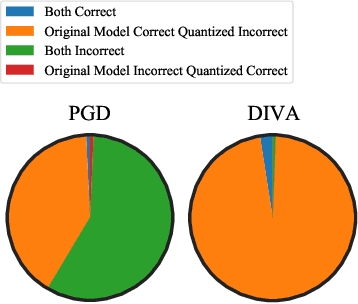


Abstract:Full-precision deep learning models are typically too large or costly to deploy on edge devices. To accommodate to the limited hardware resources, models are adapted to the edge using various edge-adaptation techniques, such as quantization and pruning. While such techniques may have a negligible impact on top-line accuracy, the adapted models exhibit subtle differences in output compared to the original model from which they are derived. In this paper, we introduce a new evasive attack, DIVA, that exploits these differences in edge adaptation, by adding adversarial noise to input data that maximizes the output difference between the original and adapted model. Such an attack is particularly dangerous, because the malicious input will trick the adapted model running on the edge, but will be virtually undetectable by the original model, which typically serves as the authoritative model version, used for validation, debugging and retraining. We compare DIVA to a state-of-the-art attack, PGD, and show that DIVA is only 1.7-3.6% worse on attacking the adapted model but 1.9-4.2 times more likely not to be detected by the the original model under a whitebox and semi-blackbox setting, compared to PGD.
Class-Aware Robust Adversarial Training for Object Detection
Mar 31, 2021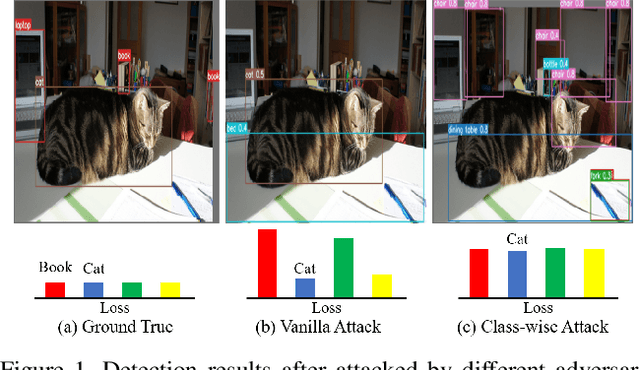
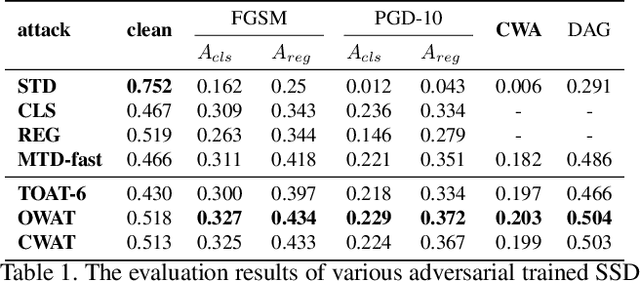
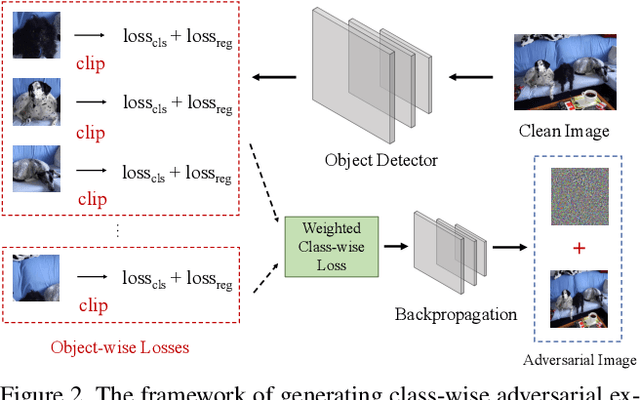
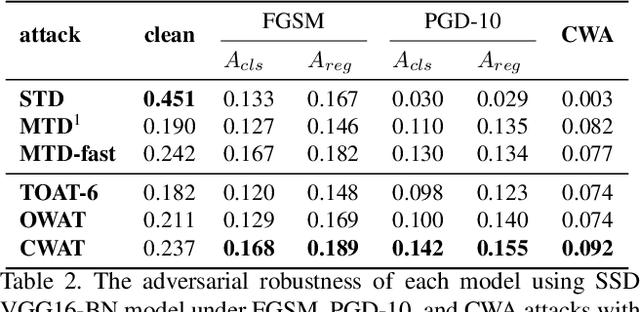
Abstract:Object detection is an important computer vision task with plenty of real-world applications; therefore, how to enhance its robustness against adversarial attacks has emerged as a crucial issue. However, most of the previous defense methods focused on the classification task and had few analysis in the context of the object detection task. In this work, to address the issue, we present a novel class-aware robust adversarial training paradigm for the object detection task. For a given image, the proposed approach generates an universal adversarial perturbation to simultaneously attack all the occurred objects in the image through jointly maximizing the respective loss for each object. Meanwhile, instead of normalizing the total loss with the number of objects, the proposed approach decomposes the total loss into class-wise losses and normalizes each class loss using the number of objects for the class. The adversarial training based on the class weighted loss can not only balances the influence of each class but also effectively and evenly improves the adversarial robustness of trained models for all the object classes as compared with the previous defense methods. Furthermore, with the recent development of fast adversarial training, we provide a fast version of the proposed algorithm which can be trained faster than the traditional adversarial training while keeping comparable performance. With extensive experiments on the challenging PASCAL-VOC and MS-COCO datasets, the evaluation results demonstrate that the proposed defense methods can effectively enhance the robustness of the object detection models.
Mitigating Asymmetric Nonlinear Weight Update Effects in Hardware Neural Network based on Analog Resistive Synapse
Dec 16, 2017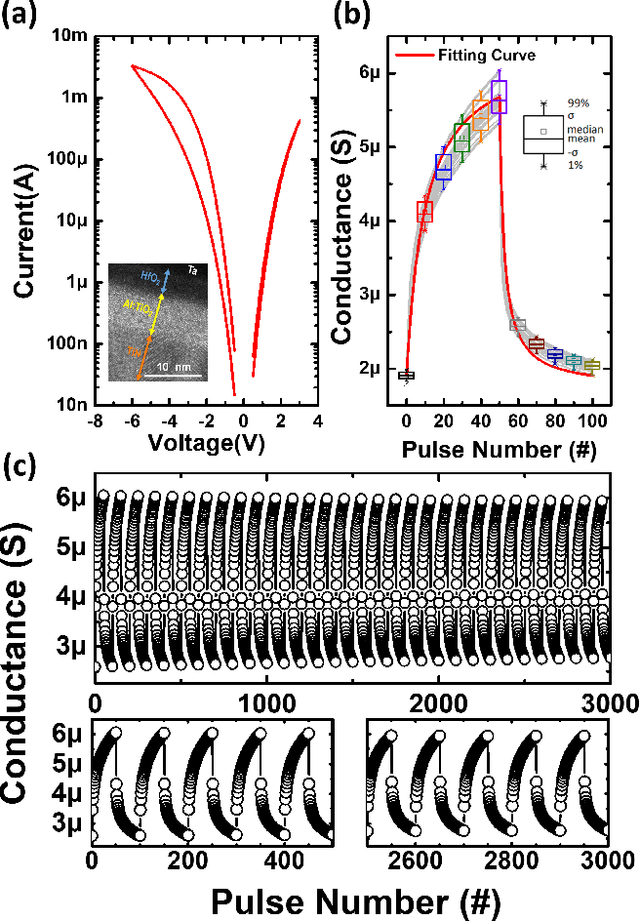
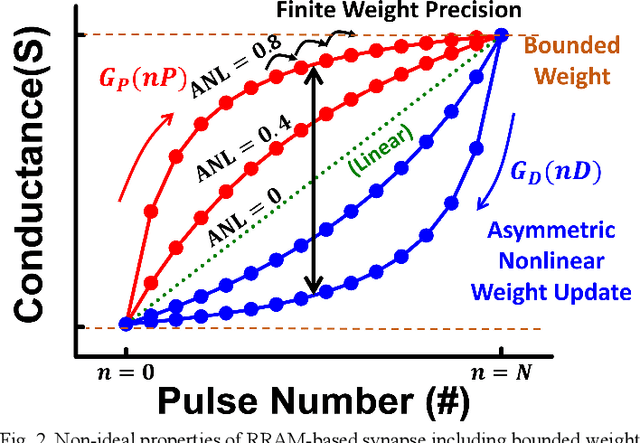
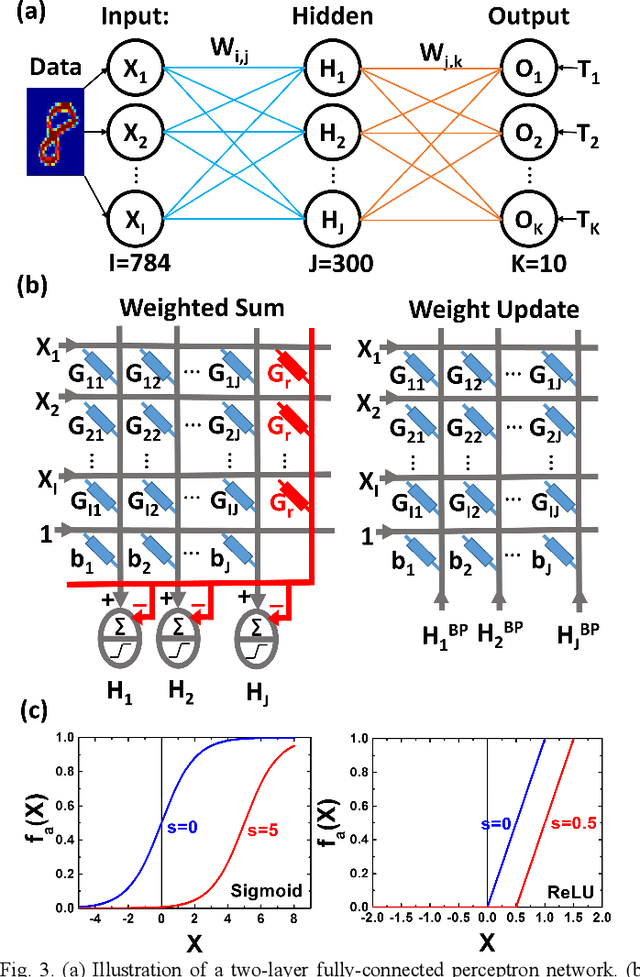
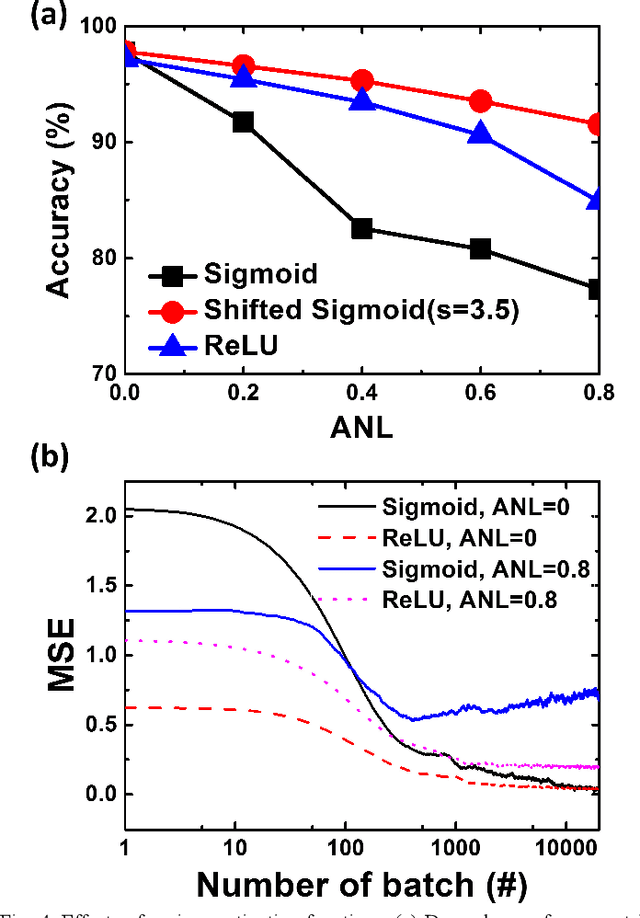
Abstract:Asymmetric nonlinear weight update is considered as one of the major obstacles for realizing hardware neural networks based on analog resistive synapses because it significantly compromises the online training capability. This paper provides new solutions to this critical issue through co-optimization with the hardware-applicable deep-learning algorithms. New insights on engineering activation functions and a threshold weight update scheme effectively suppress the undesirable training noise induced by inaccurate weight update. We successfully trained a two-layer perceptron network online and improved the classification accuracy of MNIST handwritten digit dataset to 87.8/94.8% by using 6-bit/8-bit analog synapses, respectively, with extremely high asymmetric nonlinearity.
 Add to Chrome
Add to Chrome Add to Firefox
Add to Firefox Add to Edge
Add to Edge